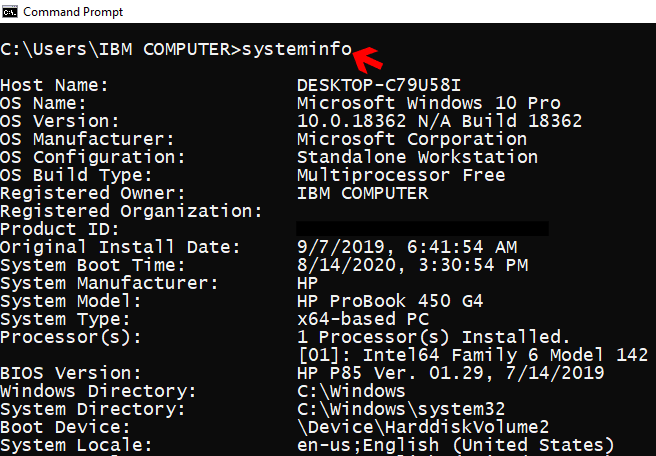
- #Ms command prompt commands how to
- #Ms command prompt commands windows 10
- #Ms command prompt commands software
- #Ms command prompt commands windows 8

You will also get set up to run Python scripts from the command line. In the second section, “ Doing More,” you will get a glimpse of some of the features that make work on the command line particularly efficient, and learn enough of the basics to be able to explore further on your own. In the first section, “ Getting Started,” you will learn to do basic desktop tasks like creating and opening files and folders using PowerShell. The tutorial is divided into two main sections. If you are already familiar with using Bash, you may be able to get started with PowerShell just by looking at the table at the end of this lesson. If you are a Mac or Linux user, you should check out the Bash introduction instead. This tutorial will introduce you to the basics of Windows PowerShell, the standard command-line interface for Windows computers.
/windows-8-command-prompt-commands-5b3f79dbc9e77c0037818c2f.png)
When including all variables, there are literally hundreds of commands. This article can only give you a taste of what’s hidden within the Windows command line.
#Ms command prompt commands windows 10
Windows 10 systems don’t come with a recovery partition, which makes it more important than ever to back up your data. In Windows 10, system recovery has changed.
#Ms command prompt commands windows 8
You must have administrator privileges to use the recimg command, and you can only access the custom recovery image you create via the Windows 8 refresh feature.
#Ms command prompt commands how to
Entering this command presents a very detailed explanation of how to use it.
#Ms command prompt commands software
Once you’ve un-installed the software you can create a new image using the recimg command. Virtually all Windows 8/8.1 computers ship from the factory with a recovery image, but the image may include bloatware you’d rather not have re-installed. To duplicate the above command for different programs, just copy, paste, and modify it as needed. Schtasks /create /sc onstart /tn "launch Chrome on startup" /tr "C:Program Files (x86)GoogleChromeApplicationChrome.exe" To complement your weekly reboot, you could schedule tasks to launch specific programs on startup: Schtasks /create /sc weekly /d FRI /tn "auto reboot computer weekly" /st 23:00 /tr "shutdown -r -f -t 10" Ultimately, it’s much easier to use, once you’ve committed key parameters to memory.įor example, you could schedule your computer to reboot at 11pm every Friday: While you can use the GUI to manage your scheduled tasks, the command prompt lets you copy&paste complex commands to set up multiple similar tasks without having to click through various options. Schtasks is your command prompt access to the Task Scheduler, one of many underrated Windows administrative tools.


 0 kommentar(er)
0 kommentar(er)
